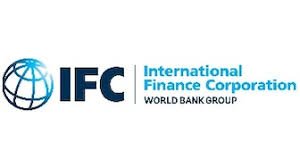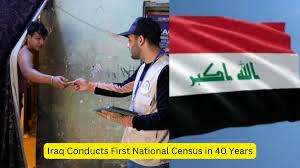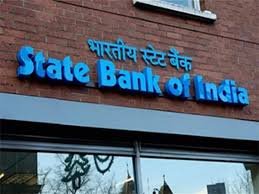India’s First Blue Loan of $500 Million: IFC Partners with Axis Bank
Introduction to Blue Loans
The International Finance Corporation (IFC) has announced its partnership with Axis Bank to provide India’s first blue loan, amounting to $500 million. This landmark initiative aims to enhance the country’s efforts towards sustainable development and marine conservation. Blue loans are specifically designed to support projects that promote sustainable ocean-related activities, contributing significantly to the blue economy.
Significance of the Partnership
This partnership marks a pivotal moment for India as it aligns with global efforts to address the challenges faced by marine ecosystems. The blue loan will facilitate investments in sectors such as fisheries, aquaculture, and sustainable tourism. Additionally, it is expected to play a vital role in supporting India’s Nationally Determined Contributions (NDCs) under the Paris Agreement, furthering the country’s commitment to sustainable development.
Focus on Sustainable Development
The $500 million blue loan aims to mobilize private sector financing for projects that are environmentally friendly and socially responsible. The financing will be directed towards initiatives that promote sustainable fishing practices, reduce plastic pollution, and enhance the resilience of coastal communities. This collaborative effort between IFC and Axis Bank underscores the significance of private sector involvement in addressing environmental challenges.
IFC’s Commitment to the Blue Economy
The IFC has been at the forefront of promoting sustainable investment strategies globally. This initiative is a part of IFC’s broader commitment to the blue economy, which recognizes the economic value of healthy ocean ecosystems. By providing this blue loan, IFC aims to encourage financial institutions in India to support projects that contribute to ocean sustainability and biodiversity.
Conclusion
In conclusion, the partnership between IFC and Axis Bank to offer India’s first blue loan is a significant step towards promoting sustainable development. This initiative not only highlights the importance of marine conservation but also showcases the potential of financial instruments in driving positive environmental change.

Why This News is Important
Enhancing Marine Conservation Efforts
The introduction of India’s first blue loan is crucial for enhancing marine conservation efforts in the country. With over 7,500 kilometers of coastline, India is home to diverse marine ecosystems that face threats from pollution, overfishing, and climate change. This initiative provides much-needed financial resources to support sustainable practices in ocean-related sectors.
Aligning with Global Sustainability Goals
This partnership between IFC and Axis Bank aligns with global sustainability goals, particularly the United Nations Sustainable Development Goals (SDGs). By promoting sustainable fishing, protecting marine biodiversity, and reducing pollution, the blue loan contributes significantly to achieving SDG 14, which focuses on life below water.
Mobilizing Private Sector Investment
The blue loan aims to mobilize private sector investment in sustainable ocean-related projects. By encouraging financial institutions to support such initiatives, the partnership paves the way for innovative financing solutions that can address environmental challenges effectively.
Supporting Coastal Communities
Investments facilitated by the blue loan will benefit coastal communities by promoting sustainable livelihoods. By supporting fisheries and aquaculture, the initiative aims to enhance food security and economic resilience for communities that depend on marine resources.
Promoting Sustainable Tourism
Sustainable tourism is another critical area that the blue loan targets. By investing in eco-friendly tourism initiatives, the partnership promotes responsible travel practices that benefit both the environment and local economies, ensuring long-term sustainability.
Historical Context
The concept of blue loans is rooted in the broader framework of sustainable finance, which has gained traction in recent years. As the global community increasingly recognizes the significance of oceans and marine resources, various financial instruments have emerged to support sustainable ocean-related projects. The blue economy, which encompasses a range of sectors including fisheries, maritime transport, and tourism, aims to balance economic growth with environmental protection.
In India, the government has been actively promoting initiatives to enhance the sustainability of its marine resources. The National Fisheries Policy and the National Policy on Marine Fisheries aim to ensure the responsible use of ocean resources while addressing the challenges posed by climate change. The partnership between IFC and Axis Bank represents a significant milestone in these ongoing efforts.
Key Takeaways from “India’s First Blue Loan of $500 Million”
| S.No | Key Takeaway |
|---|---|
| 1 | The IFC and Axis Bank have launched India’s first blue loan of $500 million. |
| 2 | The blue loan aims to promote sustainable marine-related projects. |
| 3 | The initiative aligns with India’s commitment to the Paris Agreement and NDCs. |
| 4 | Investments will focus on sustainable fisheries, aquaculture, and tourism. |
| 5 | The blue loan supports the broader blue economy framework and enhances marine conservation efforts. |
Important FAQs for Students from this News
1. What is a blue loan?
Answer: A blue loan is a financial instrument designed to support projects that promote sustainable ocean-related activities, focusing on environmental conservation and economic growth in marine sectors.
2. How much is India’s first blue loan worth?
Answer: India’s first blue loan, provided by the IFC in partnership with Axis Bank, is worth $500 million.
3. What sectors will benefit from the blue loan?
Answer: The blue loan will support sectors such as fisheries, aquaculture, and sustainable tourism, promoting environmentally friendly practices.
4. Why is this blue loan significant for India?
Answer: This blue loan is significant as it enhances marine conservation efforts, mobilizes private sector investment, and aligns with India’s commitment to global sustainability goals, including the Paris Agreement.
5. How does the blue loan contribute to sustainable development?
Answer: The blue loan contributes to sustainable development by funding projects that protect marine biodiversity, promote sustainable livelihoods for coastal communities, and encourage responsible tourism.
Some Important Current Affairs Links

















